The following chart illustrates the global search engine market share:
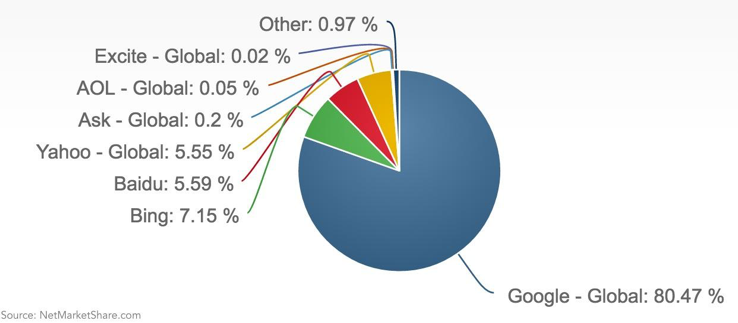
Google leads as the preferred search engine by a significant margin and continues to process billions of search queries every day. Ranking in the search results for keywords related to your business can drive a considerable amount of traffic to your site. And unlike other marketing channels (e.g. social media), traffic from search tends to convert better.
A visitor who lands on your site from a search query has already expressed interest in your products or services. Compare this to someone who casually comes across your site while browsing Facebook. The latter is less likely to convert as the intention is different.
Search is an incredibly reliable source of targeted traffic then. But simply having a site isn’t enough to rank on the first page. Google relies on complex algorithms to determine rankings.
This is where search engine optimization comes in.
SEO is simply the practice of optimizing a site to rank higher for target keywords. It typically involves the following:
- Optimizing content to be search engine friendly
- Ensuring the site meets all technical guidelines
- Building links from relevant sites
This is only a general overview of what SEO entails as actually ranking a site can easily take weeks or even months of sustained effort.
Another alternative to drive traffic from search is by advertising on AdWords, Google’s PPC platform that lets advertisers bid on relevant keywords and create paid ads. The advantage here compared to SEO is the potential to drive immediate traffic to your landing pages.
SEO and PPC are completely separate from each other. A high performing AdWords campaign won’t translate to better rankings in the organic search results. Similarly, a well implemented SEO campaign won’t have any impact on your ads.
Businesses tend to treat SEO and PPC as completely separate marketing strategies (largely because they are). But these strategies are far more powerful when used together for the following reasons.
1. Capture Multiple Positions
Previously, paid search ads used to be displayed on the right hand side of the desktop results. But Google implemented a new change only last year to have ads shown at the top and bottom of the search results.
Here is an example of a search result that displays both ads and organic listings:

Why does this matter?
Because even if your site ranks number one organically, any paid ads for the same search queries will push your listing farther down the page. Competing ads would essentially be taking away traffic from your pages.
Data shows that most search engine users click on the first few results and rarely click past the second page.

Combining PPC with SEO means being able to potentially take up multiple positions on the front page. Here is an example of a business that ranks for and has an ad for the keyword phrase “website heat map tool”:
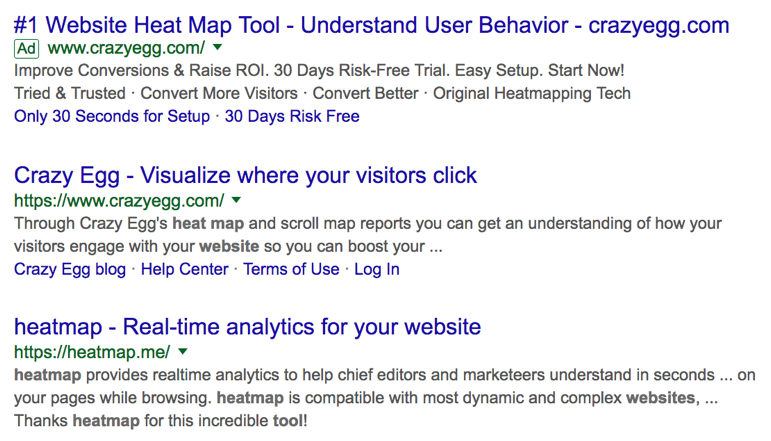
Taking a similar approach requires more effort but the end result is more traffic and sales to your business.
2. Discover Valuable Keywords
Keywords are at the heart of any SEO and PPC campaign. For either marketing strategy, you need to target the right keywords or you risk wasting tremendous resources.
For example, just ranking organically for a single keyword phrase can easily take months. But it may not necessarily drive any traffic that converts. Likewise, not performing adequate keyword research for AdWords campaign can cause you to quickly burn through your marketing budget.
So even before starting an SEO campaign, you want to be sure that the keywords you’re targeting will drive enough traffic and sales to make it worthwhile.
AdWords can be incredibly invaluable in this instance.
The Keyword Planner tool is widely used as a marketing tool for keyword research. But one of its shortcomings is the lack of actual data on search volume. Google only provides estimates which can vary widely.
Here is an example:
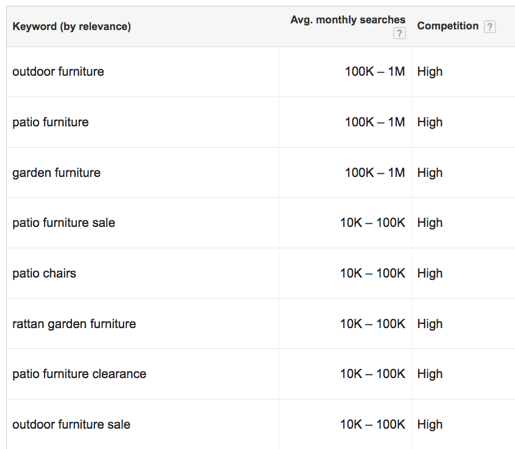
So how can you get a more accurate estimate of search volume?
By running a PPC campaign with keywords you want to target in an SEO campaign.
What makes AdWords particularly valuable is the Search Query Reports. This report provides additional insight on keywords that are driving traffic to your ads including impressions and conversions. The data can then be used to inform your SEO marketing strategy.
If a keyword delivers positive results, it would be worth creating an SEO campaign around. But if a keyword performs poorly, you know not to waste your resources ranking for that phrase in the organic results.
3. Test Different Ad Copy
David Ogilvy famously made the following statement:
On the average, five times as many people read the headline as read the body copy.
And he was right. Your headlines need to be captivating to get people to read the rest of your copy. If you can achieve that, you have a far better chance of converting visitors into customers.
But writing effective copy is another matter entirely.
Headlines that you thought would do well could be complete flops and seemingly risky headlines could end up being major performers. The difference can be huge in terms of your bottom line as more clicks means more opportunities to convert your visitors.
One way to create better headlines is to split test them in AdWords. This involves running two ads with different headlines and then comparing the click through rates after each has had a decent amount of traffic.
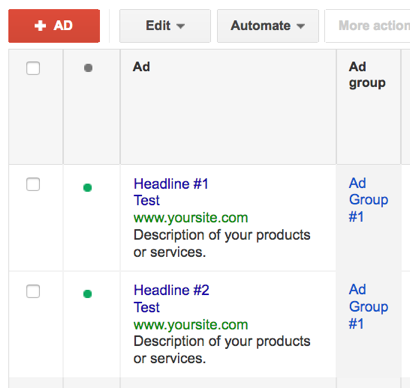
The winning ad copy can then be used as starting points to boost performance of other ad groups and to craft headlines for your main site such as blog articles. There is even some data to suggest that boosting click through rates can actually increase search engine rankings.
So start split testing the headlines of your ads as even a single change can have a positive impact on conversions.
4. Inform Your Local SEO Strategy
Data from Google has shown that 4 out 5 consumers use search engines for local information.
If your customers are primarily local, you will definitely want to rank for local search terms. The typical approach would be to create individual landing pages for different locations and then work to get those pages ranked.
But this process can be incredibly time-consuming. Not to mention expensive as you would need to allocate resources to rank those pages from optimizing the content to building relevant links. Just as you can use data in AdWords to determine the viability of certain keywords, a similar approach can be used to inform your local SEO strategy.
This is where the geotargeting feature in AdWords comes in handy.
Geotargeting is a feature that lets advertisers limit their ads to certain regions. This can be easily changed for each campaign by selecting the appropriate location.
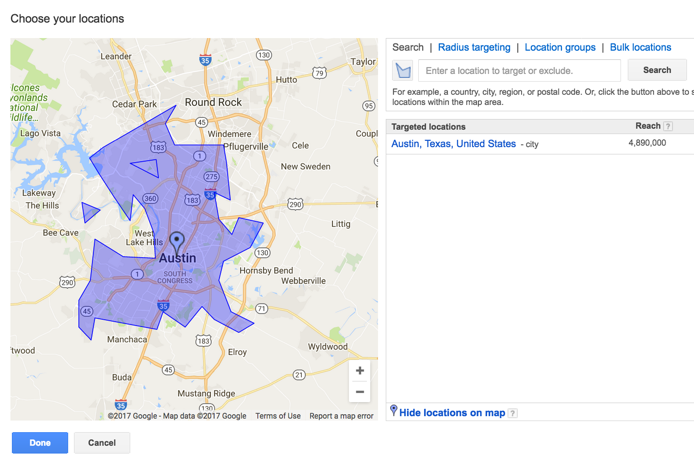
Targeting specific regions makes a lot of sense for local businesses. If your products or services are only available in a certain area, you wouldn’t want clicks from outside that area.
With geotargeting, you can run ads in different locations and compare the results to see which areas have generated the best results. If ads in a certain region perform well, you can create a local SEO strategy to get those keywords ranked in the organic results. But if a region performs poorly, it may not be worth the time and effort it takes to get it ranked organically.
Conclusion
SEO and PPC complement each other in many ways. AdWords campaigns can uncover valuable data such as potentially lucrative keywords that can be used to inform an SEO campaign. And ranking your site in the organic search results helps to solidify your online presence.
Instead of limiting yourself to one or the other, incorporate both to give your search marketing strategy a massive competitive advantage.
